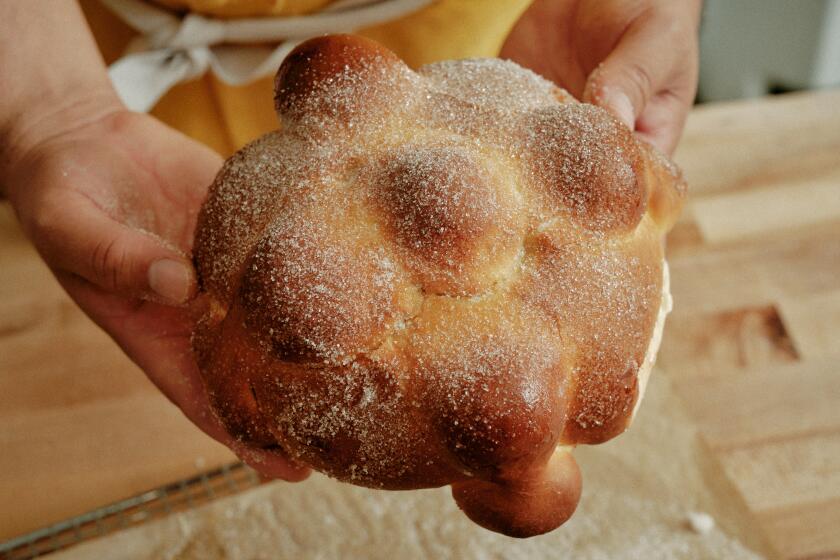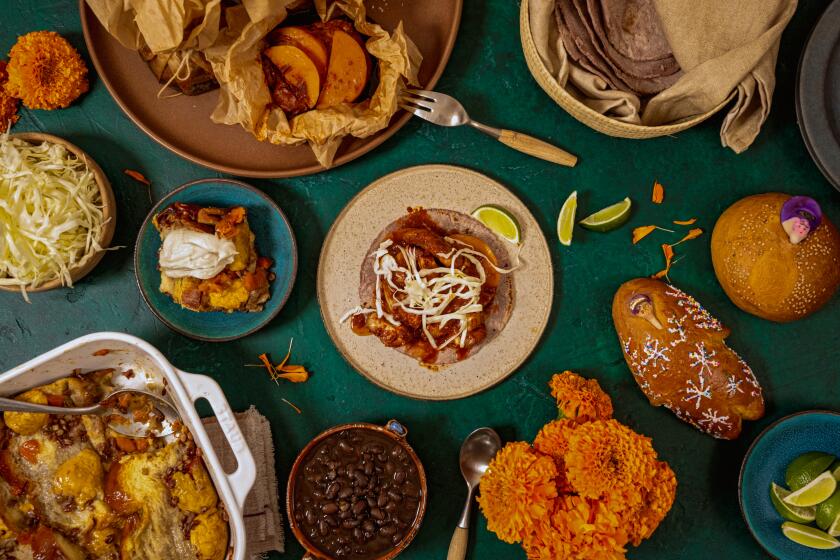
- Share via
- Gusto Bread owner Arturo Enciso is redefining Mexican pastries from a bread baker’s point of view.
- At Gusto, kouign amann is made with masa and concha with sourdough starter in a new-wave moment for pan dulce.
- The Gusto founder shows us how to make pan de muerto, with the option to add sourdough starter, for Día de Muertos.
On an early fall morning, Gusto Bread owner-baker Arturo Enciso ties on his yellow apron, puts Coltrane on the record player and makes himself an espresso. The October fog that rolls through the 4th Street corridor of Long Beach says it’s the season of pan de muerto, the sweet buns that the tiny bakery makes every year for Día de Muertos, up to 400 a day.
In the middle of the neatly crammed bakery kitchen, which smells of sugar and butter and yeast, is a double-wide butcher-block table for preparing breads and pastries. Enciso’s making a home version of his pan de muerto recipe, an experiment with a bubbly sponge of flour, milk and yeast, combined with his sourdough starter.
Gusto Bread's Pan de Muerto
“I’m not trying to make the same exact thing every time. This isn’t the same as the last time or last year or yesterday,” Enciso says. “That’s who I am. It’s artisanal. You’re making it by hand. I try to not get too caught up in making perfect.”
That might be exactly why customers queue down the block for Gusto’s naturally leavened bread with stone-milled grains, sourdough concha and nixtamal queen, Enciso’s version of the flaky Breton pastry kouign amann but made with his own masa.
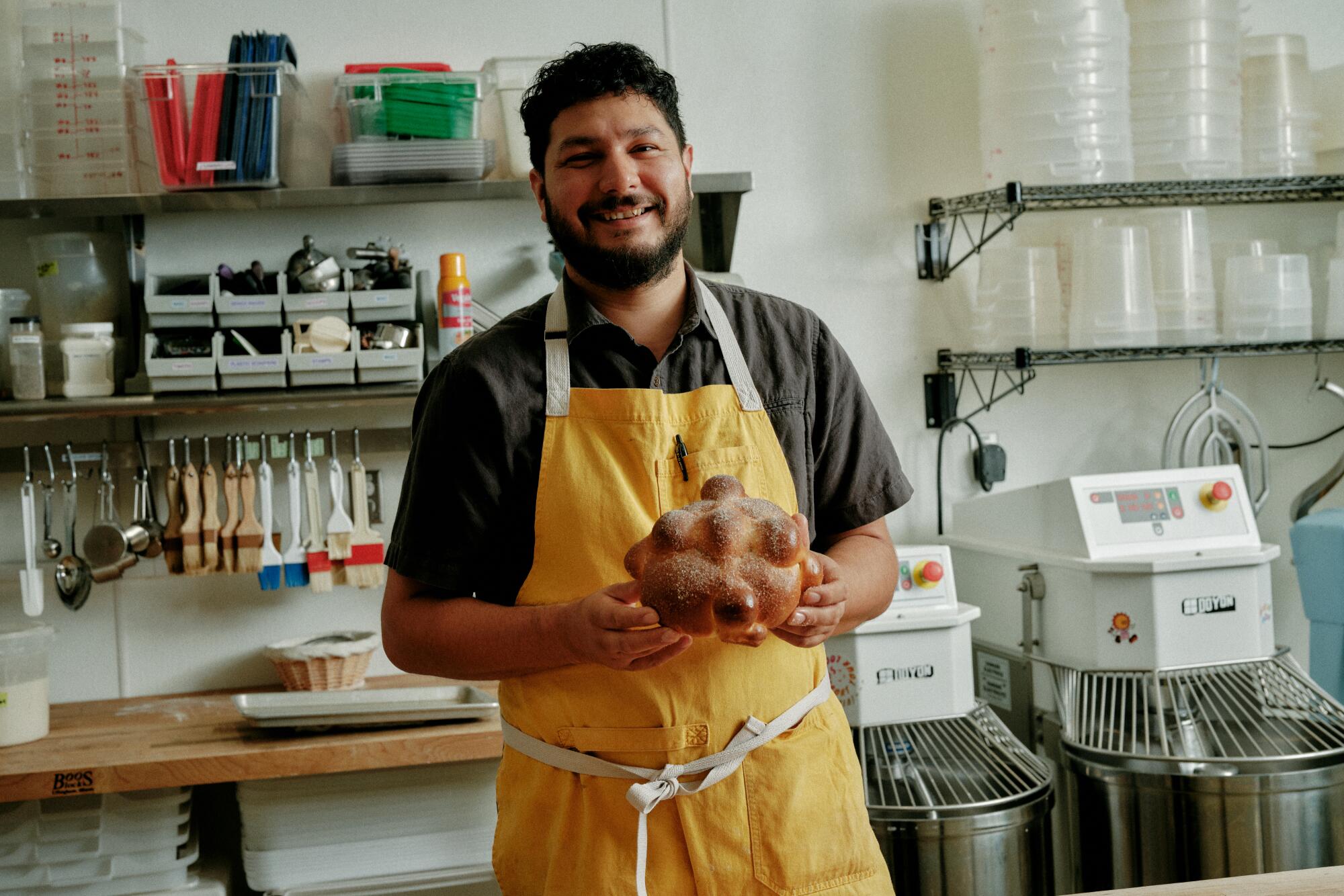
“Pan de muerto is an exploration in my cultural background,” says Enciso, who grew up in Lebec, Calif., and moved to Long Beach after high school. He taught himself to bake in a wood-fired cob oven, turning out pain au levain and baguettes. Initially, he and his partner, Ana Belén Salatino, operated Gusto Bread from their living room, then opened the bakery on Retro Row in 2020.
In the beginning, baking in a wood-fired oven “was for me a spiritual practice,” he says. “It was my time to just be alone with the fire and work on cultivating this [sourdough] starter, but really, it was cultivating myself.”
Honoring the ancestors is universal. Anyone called to commemorate their loved ones can embrace and celebrate Día de Muertos.
Something stirred in him, he says. At the time he was selling only baguettes and galettes, and “it started not to feel like me as someone with a multicultural background. I’ve never been to France, I don’t know what pain au levain is. I started to feel like an impostor in a way.
“My parents are both from Mexico. I want to now do things I grew up with that my parents can see and I want to see their faces light up to something familiar to them.”
Enter masa
A few years ago, when a cook from erstwhile Taco María, the visionary Mexican restaurant from Carlos Salgado in Costa Mesa, showed up at Enciso’s cottage with a gift of fresh masa, it sparked an impulse. “I was like, ‘Wow, this is the aroma of fresh dough.’ It was just really captivating.”
Salgado brought him calcium hydroxide for nixtamalizing corn, and Enciso started making masa himself.
“So when I did, I just threw it in the sourdough mix [for baguettes], and then when I baked that, I was really amazed by the aromas.

“It kind of reminded me of working with rye. It was familiar but also a different texture. ... It brought so many memories of tamales, bolillos and bread.”
He started playing with the idea of masa in kouign amann, inspired not by pastry chefs such as Dominique Ansel, who helped popularize it, but by the bread bakers of Brittany.
The original kouign amann is made with bread dough, folded with butter to create layers and baked until the sugar caramelizes, with a crispy exterior and a soft interior.
“The original one is more what I wanted to do, a very rustic form of pastry,” Enciso says. “A lot of people use croissant dough, which almost seems like a cheat. I was always connected to the bread baking side of it.”
Enciso incorporated about a third masa into his dough and dubbed the result the nixtamal queen, a hefty, flaky pastry of butter and sugar and the flavor of corn.
From concha to pan de muerto
Masa was the launch pad for a reinterpretation of pastries. “I had learned to make masa, and I was making nixtamal queen, but again that wasn’t traditional” to Mexico, Enciso says.
When he signed the lease for the bakery, he asked himself, “What’s the menu going to look like?” So he experimented with a sourdough concha, what might be the most emblematic of Mexican pan dulce, typically topped with a sugar-shortening mixture cut to resemble a shell.
For Día de Muertos, make these mixiotes of chile-marinated chicken cooked in bundles of string-tied parchment. Add a dessert of bread pudding soaked in piloncillo syrup and studded with fruit and pecans.
“What was concha like 100 years ago? There were no dough conditioners, no white flour, it was rustic,” he says. “That was how I approached our concha.
“Anyone has access to starter anywhere you are in the world — just ferment flour.” Sourdough starter adds to the conversation: “What is a concha? Does it have to have dough conditioners? Does it have butter? Some people don’t even add eggs.”
He now uses what he knows from making sourdough concha — one of Gusto’s bestselling pastries — to apply it to seasonal pan de muerto, available at the bakery every year from October through Día de Muertos, which takes place Nov. 1 and 2.
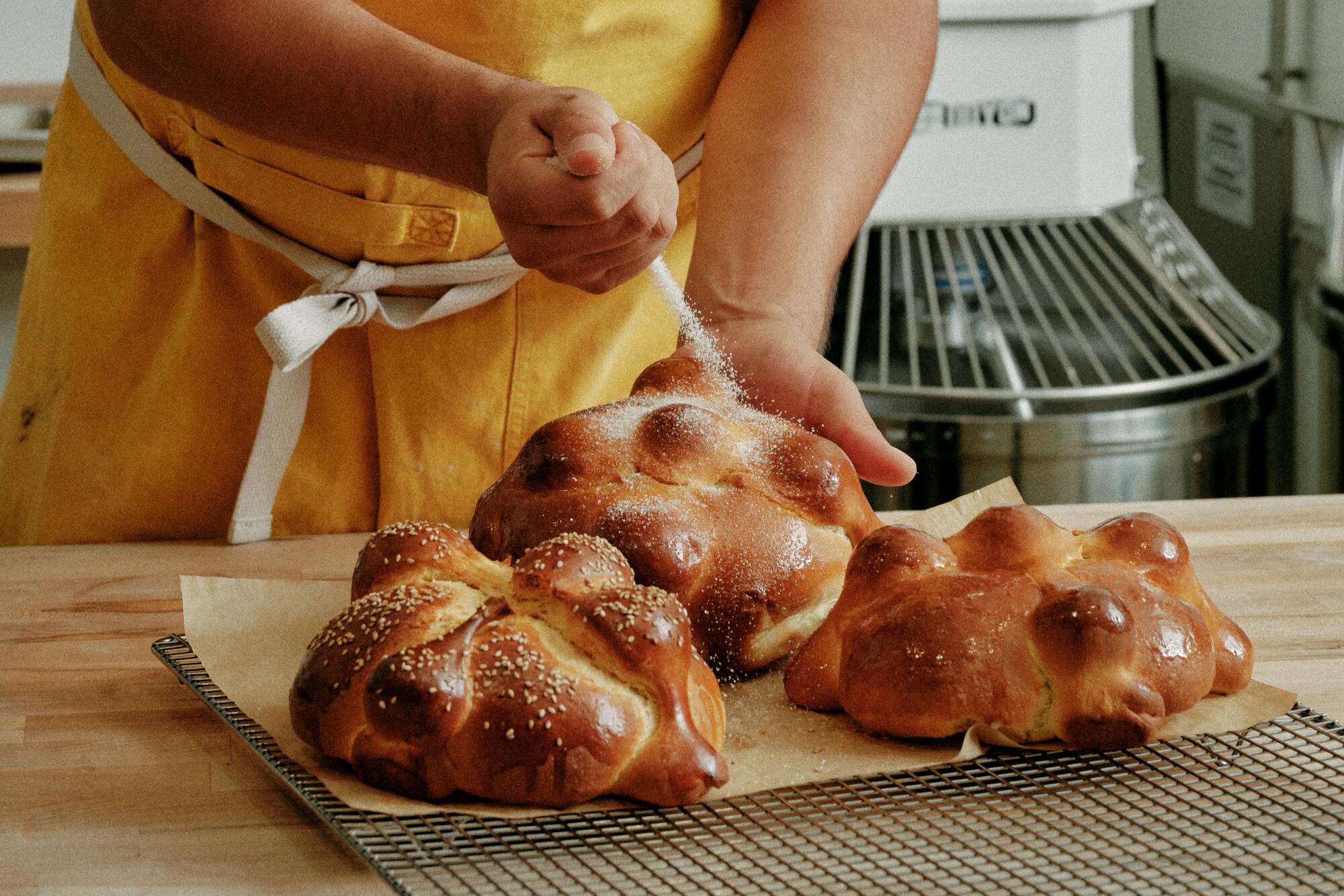
Based on his concha, the pan de muerto recipe “evolved every year,” he says. “I didn’t used to add egg yolks, and now we’re adding yolks. I started introducing a sponge too. Just adding things to it along the way, making it more tender.
“And I like the concha being the concha. I wanted [the pan de muerto] to be a smoother dough, more golden. Egg yolks and a sponge helped for it to be different.”
Mix the dough
Into the bowl of a standing mixer he adds his foamy sponge. “It’s very active. You want to see webbing,” he says.
He tips in orange zest and ground fennel, traditional flavorings for pan de muerto, which is eaten right away or placed on altars as a gift for ancestors and a reminder of the cycle of life and death.
1
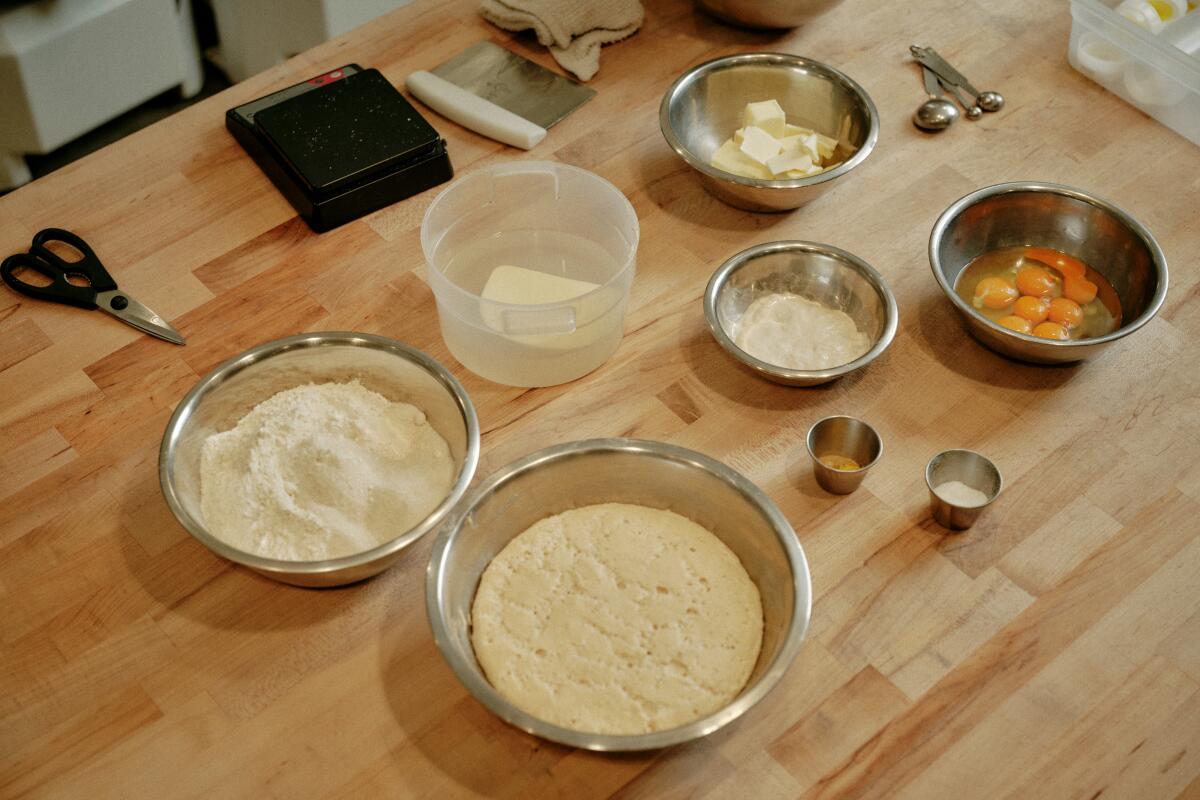
2
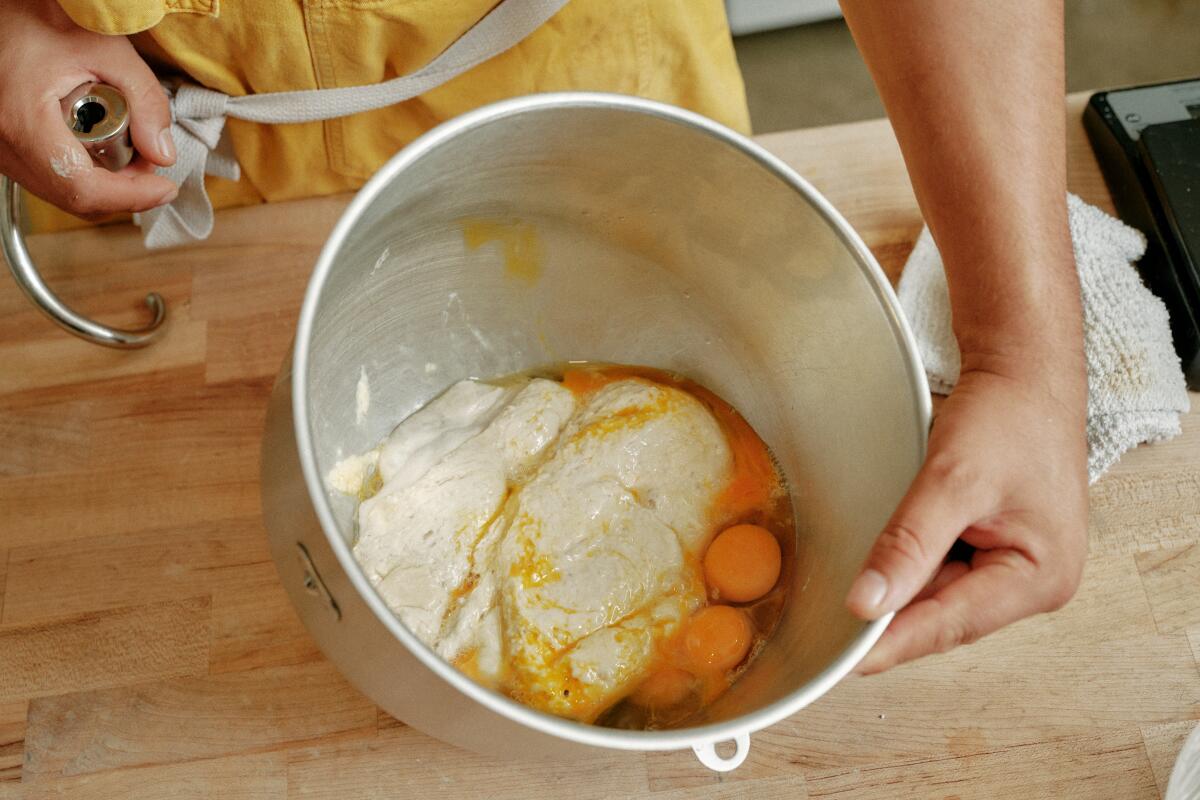
3
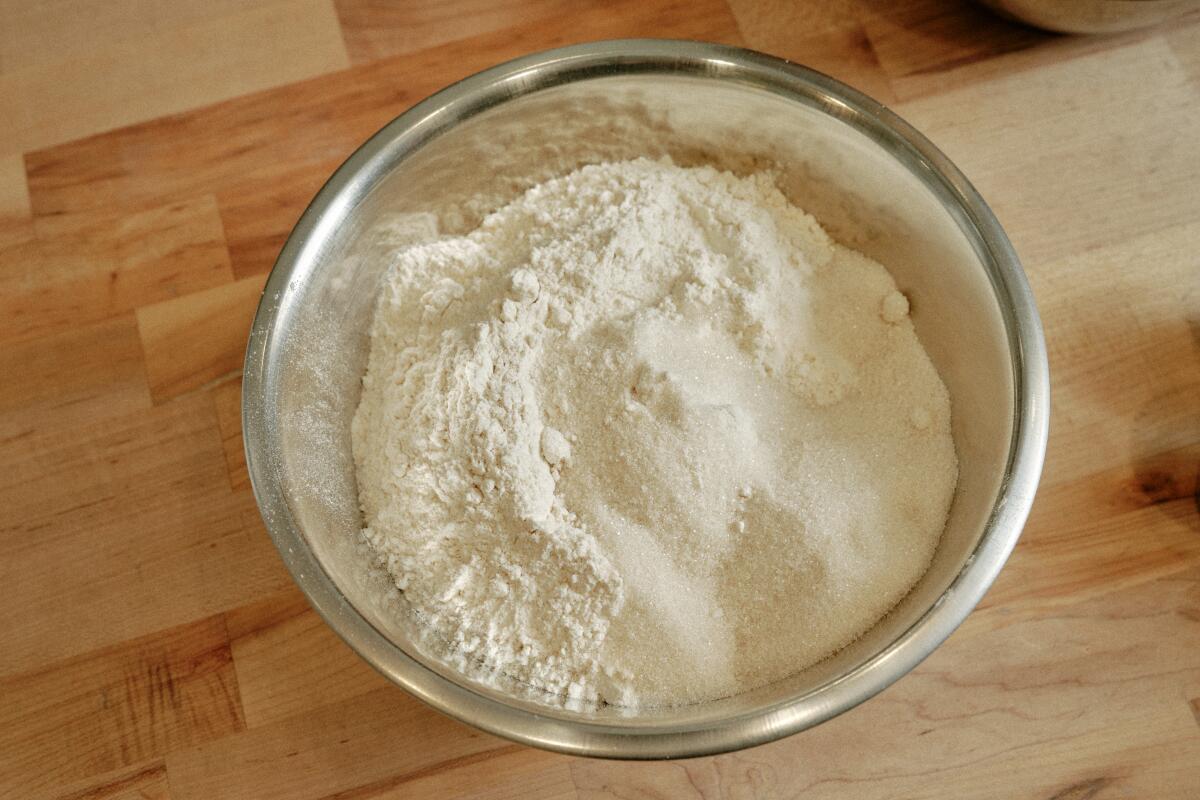
4
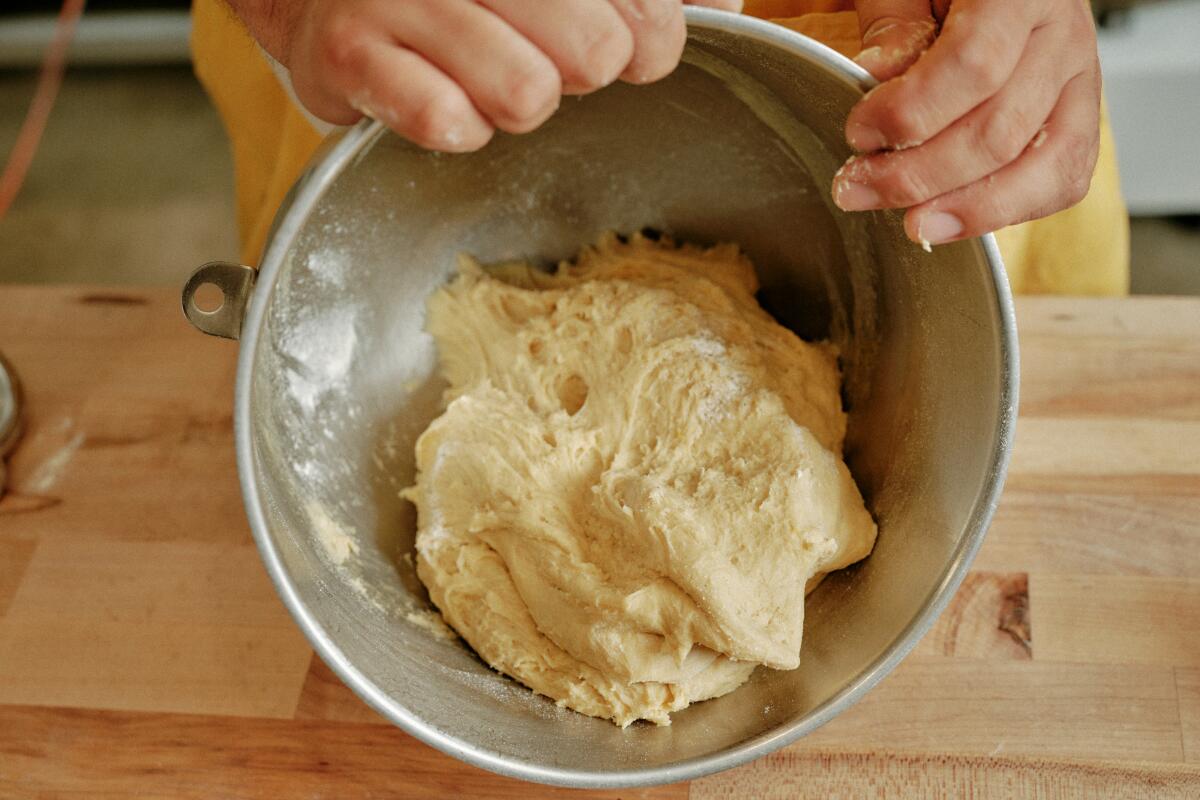
1. Ingredients for pan de muerto, including both a yeasty sponge and sourdough starter. 2. Put the sponge, sourdough starter and eggs into the bowl of a mixer. 3. Slowly add the flour and sugar. 4. At this point, once mixed, the dough will be a shaggy mass.
In go the eggs and yolks and the stretchy sourdough starter — a living culture of beneficial yeast and bacteria for making bread rise and creating flavor — that’s central to the bakery. It’s fed every morning and left out to ripen for several hours before it goes back into the walk-in refrigerator for the next day’s loaves and concha.
Like many other bakeries, Gusto sells its sourdough starter to customers. “It’s abundant,” Enciso says. He’s not precious about it, dispelling a myth that older starters are somehow better. “It’s just wild yeast.”
On a trip to a vineyard in Valle de Guadalupe, Mexico, he grabbed a few grapes and put them in a bag in his pocket. He later crushed them into flour with a little bit of water. The next day, he had active grape yeast starter, which he’s still using.
With the mixer on low speed, he slowly adds the sugar and flour. He has just received a shipment of flour milled from Sonora wheat (the first variety successfully cultivated in the New World, used in northern Mexico to create wheat tortillas). The wheat was grown and milled by his friend Mai Nguyen, a Northern California farmer of heirloom grains.
Butter goes into the dough a bit at a time and makes the bread rich and pillowy with a crumb that “shreds” when you tear into it. Straight out of the oven, the interior is “like a marshmallow,” he says.
After several minutes of kneading by the machine so that every last bit of butter is fully incorporated, Enciso dumps the smooth, elastic dough into a bowl, covers it with a clean towel and lets it proof until it doubles in size.
1
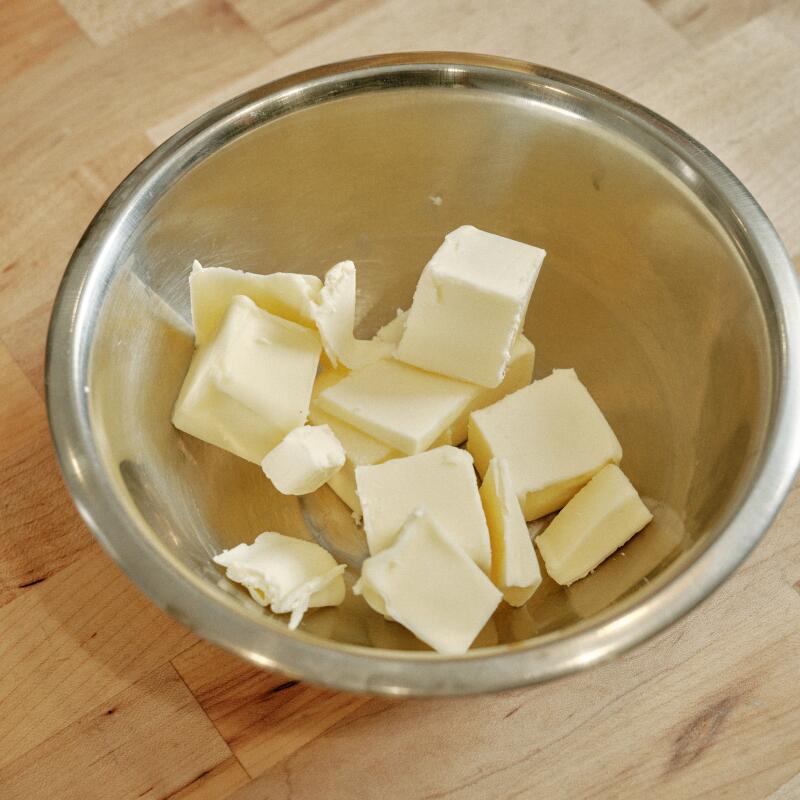
2
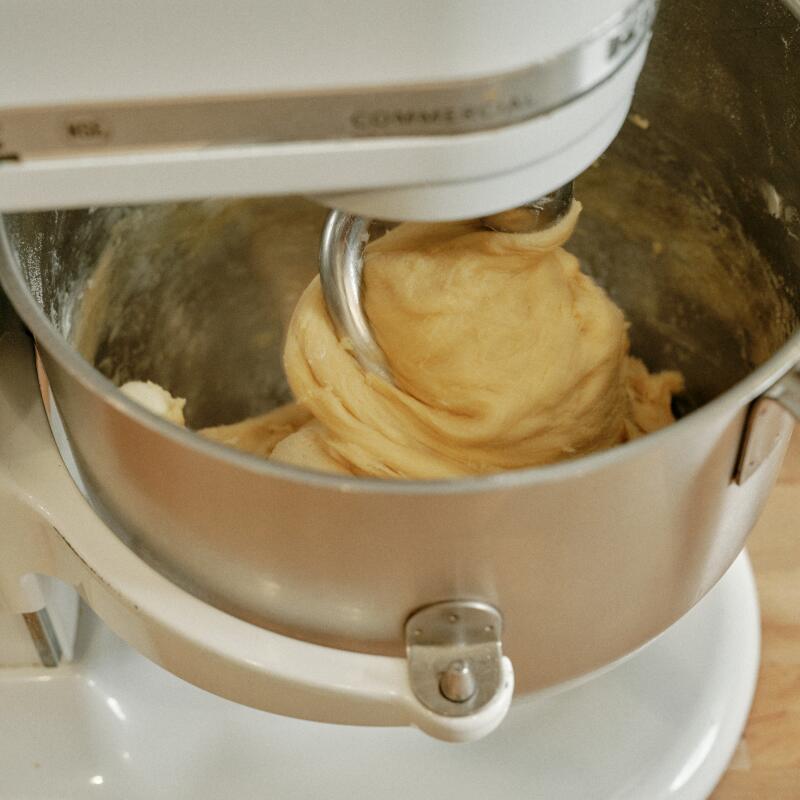
3
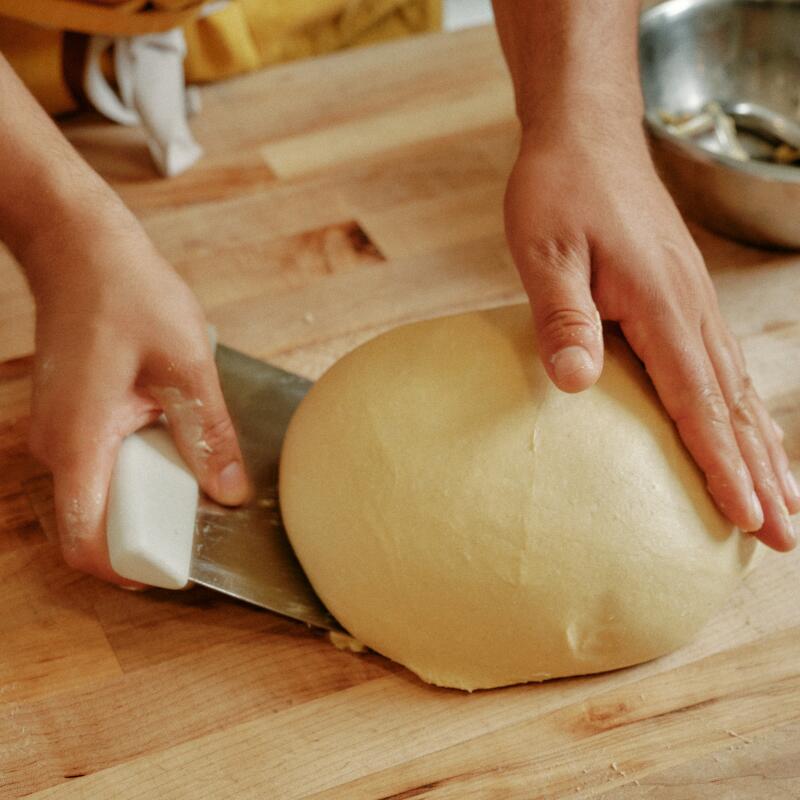
1. Add the butter a little a time. 2. Slowly mix for several minutes until the butter is fully incorporated. 3. You’ll have a smooth, elastic dough.
Shape the bread
Less than an hour later, he’s ready to shape the pan de muerto, which might be the most intimidating part about making the breads, which are topped with decorative pieces meant to resemble bones or tears.
First, he divides the dough, which makes enough for six large panes de muerto: He pats it out into a rectangular shape on a lightly floured surface so that it’s easier to cut with his metal bench scraper into eight equal pieces (six for the buns and two — which will be divided further — for the decorative “bones”).
He skillfully shapes each piece of dough into a round, cupping it in his hands and rolling it across the surface of his butcher-block table until it’s completely smooth (see photos below). They’re so big that only three will fit onto one baking sheet.
1
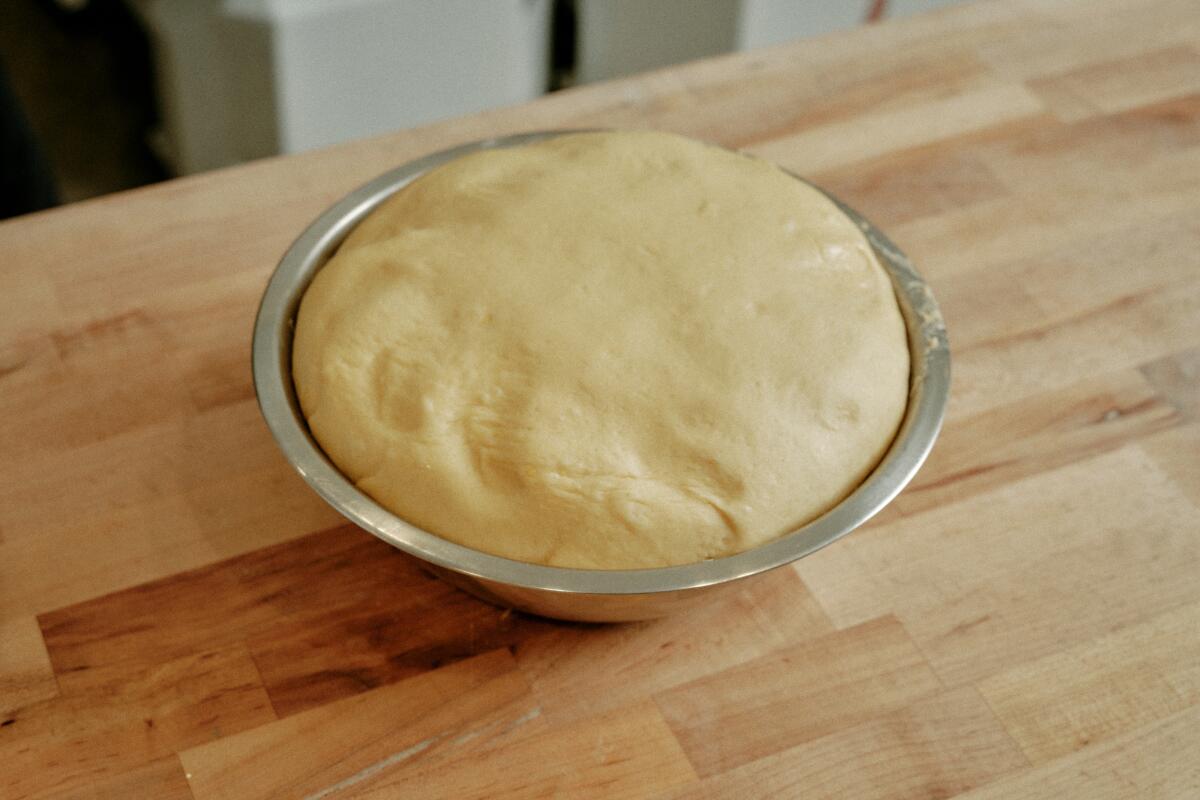
2
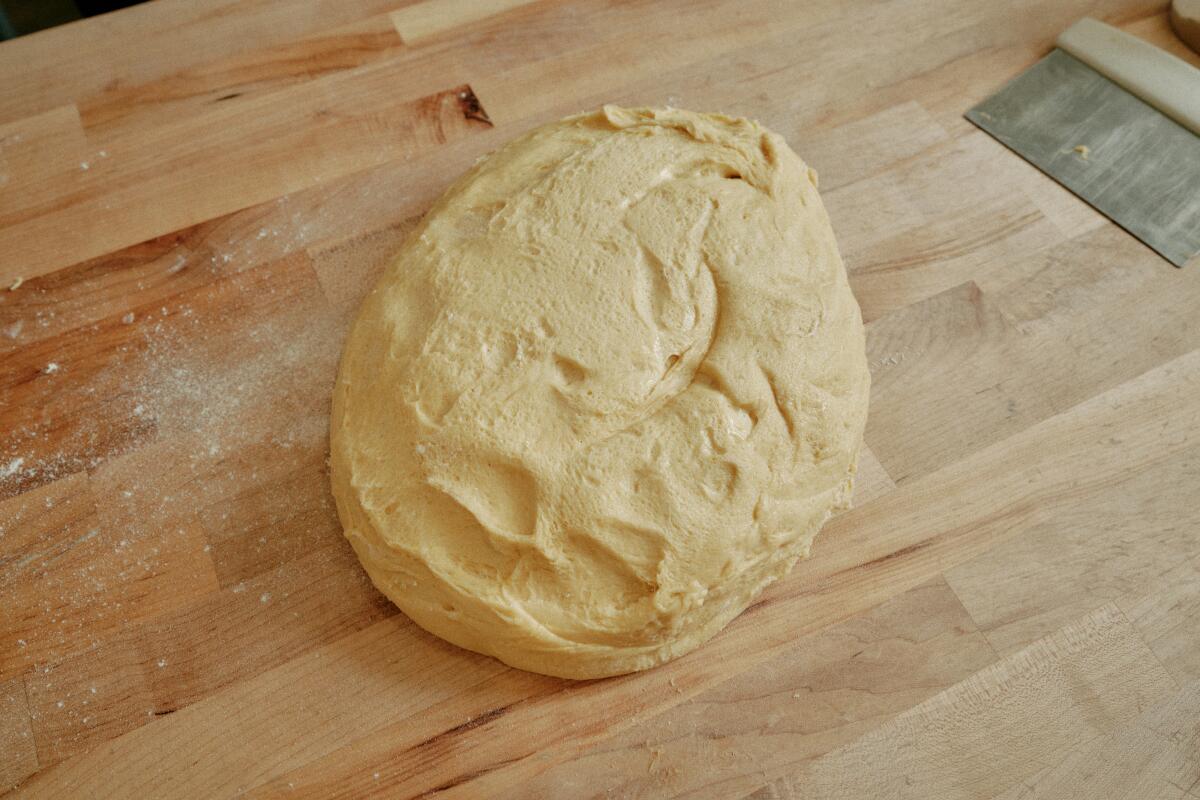
3
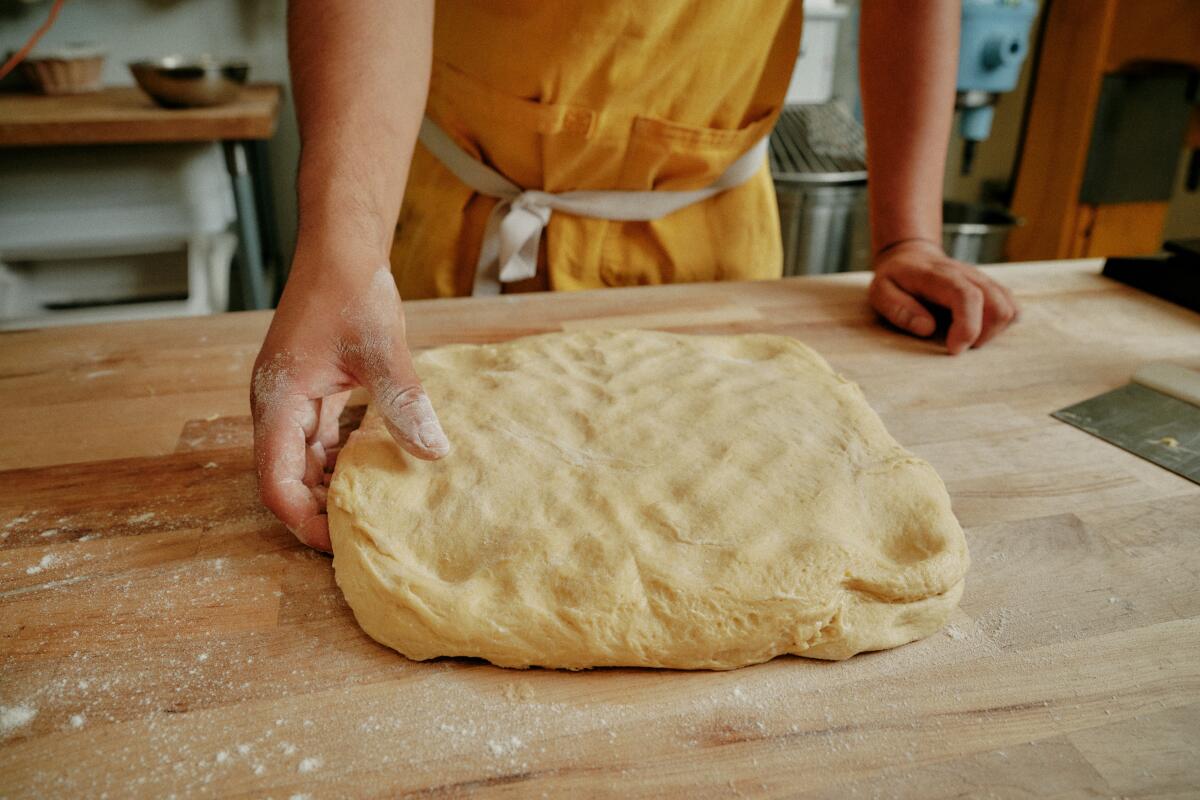
4
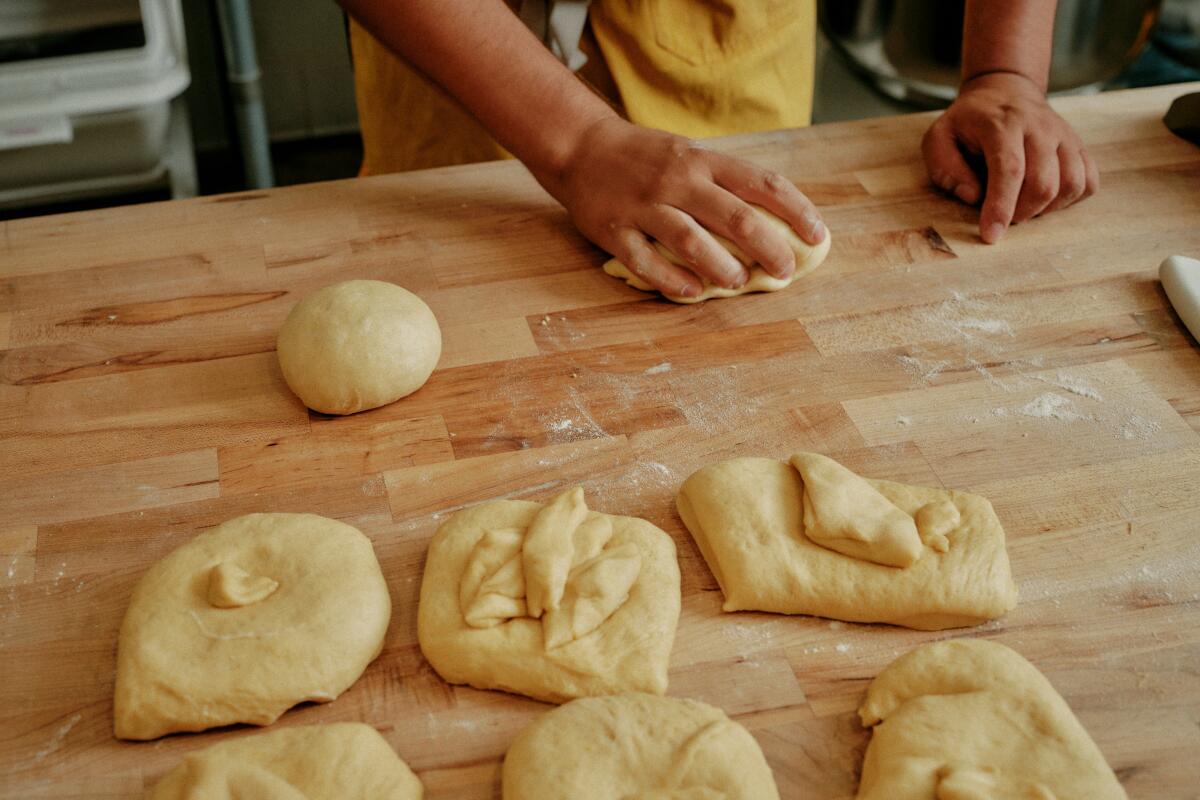
1. Proof the dough in a bowl until it has doubled in size. 2. Turn the dough out onto a lightly floured surface. (Shelby Moore/Los Angeles Times) 3. Pat it into a rectangular shape. 4. Cut the dough into eight pieces. Roll six of the pieces into smooth balls.
Make the ‘bones’
The “huesos,” or bones, distinguish this style of pan de muerto — there are many styles across regions. This one’s the most typical Day of the Dead bread of Mexico City, where Enciso’s father is from.
Some say the decorations are the bones of the dead, others say they’re the tears of the Aztec goddess Chīmalmā, who cries for the living. Either might require a little practice shaping, but it isn’t hard to get the hang of.
1
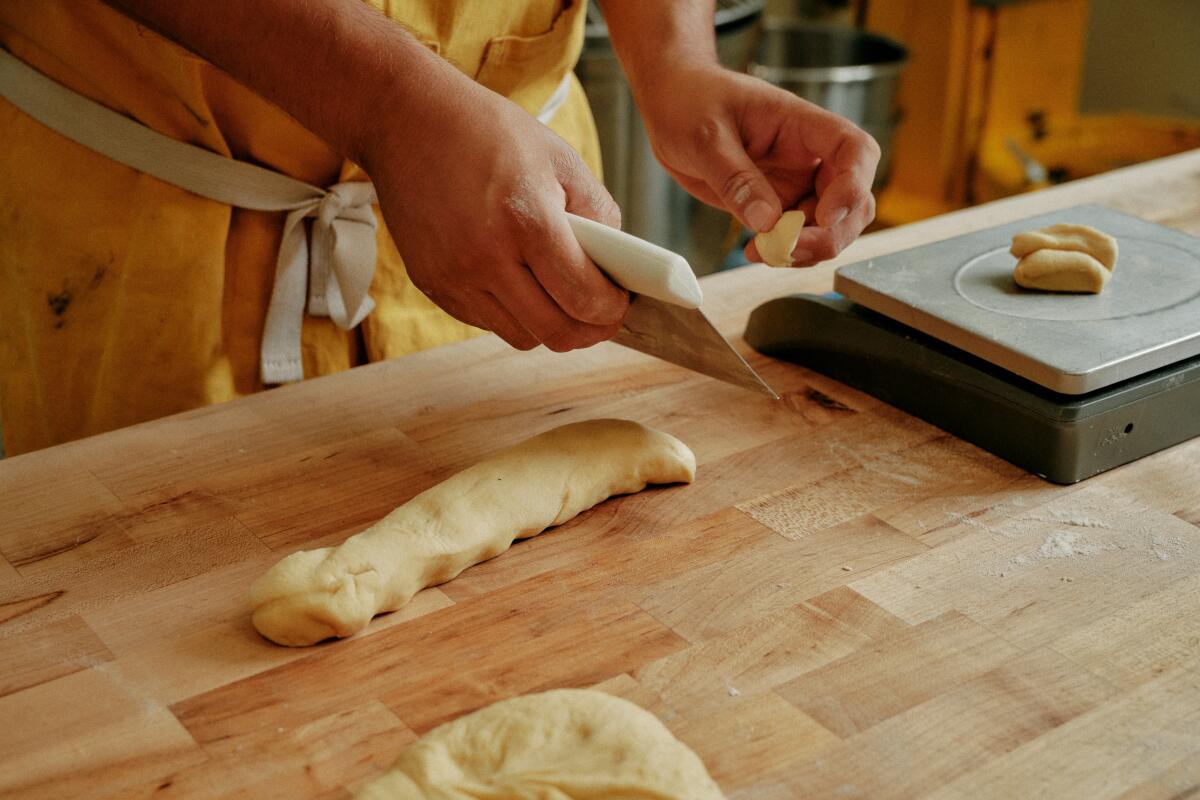
2
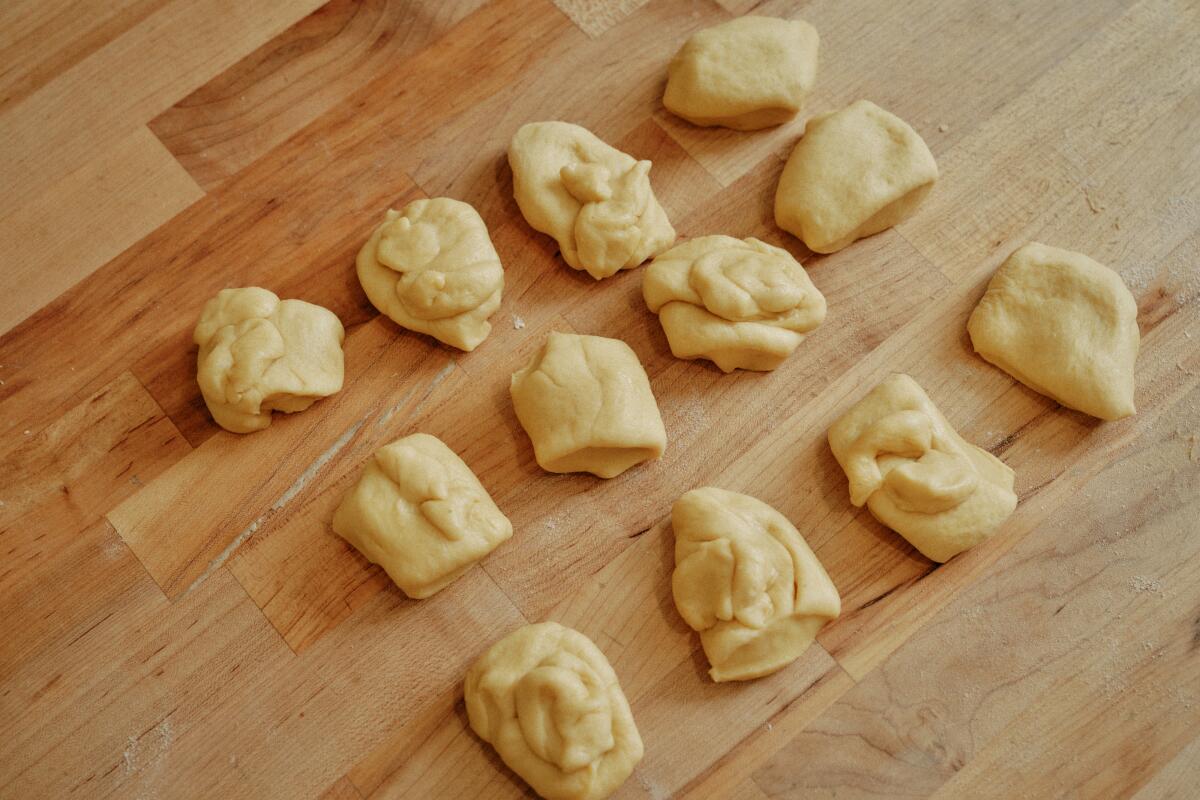
3
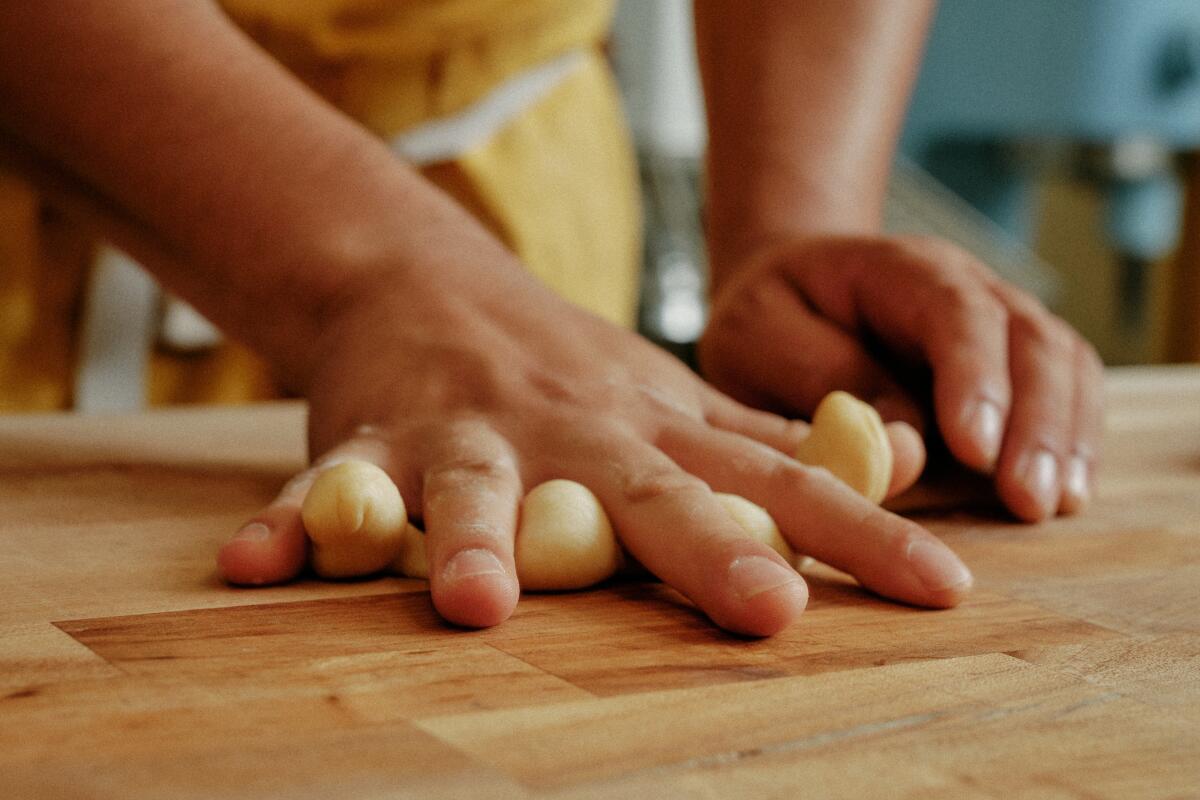
4
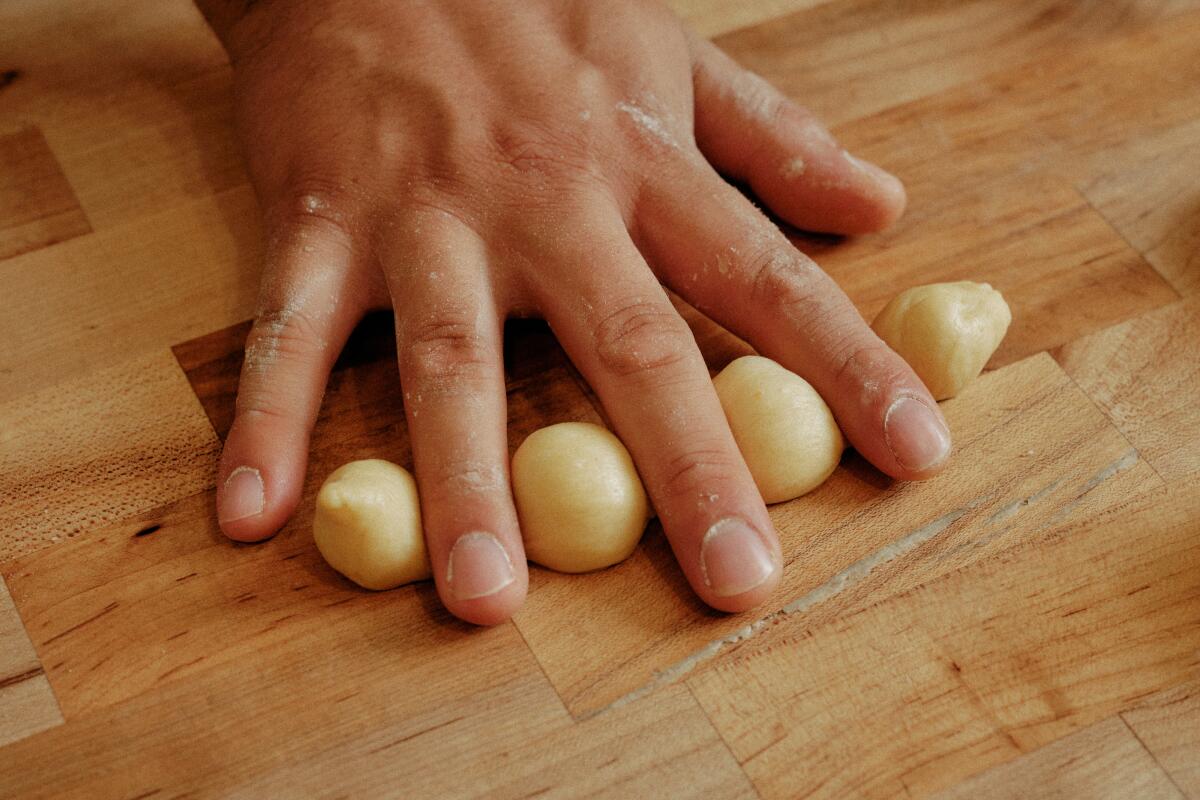
1. With the remaining two dough balls, cut each into six pieces so that you have 12 total. 2. You’ll need two dough pieces per pan de muerto, for making crisscrossing “bones.” 3. Shape each piece into a log. Extend your fingers and roll the log of dough toward yourself along the length of your fingers to create knobs. 4. One set will have four knobs and the other three knobs to form an X with a ball in the center on each bun.
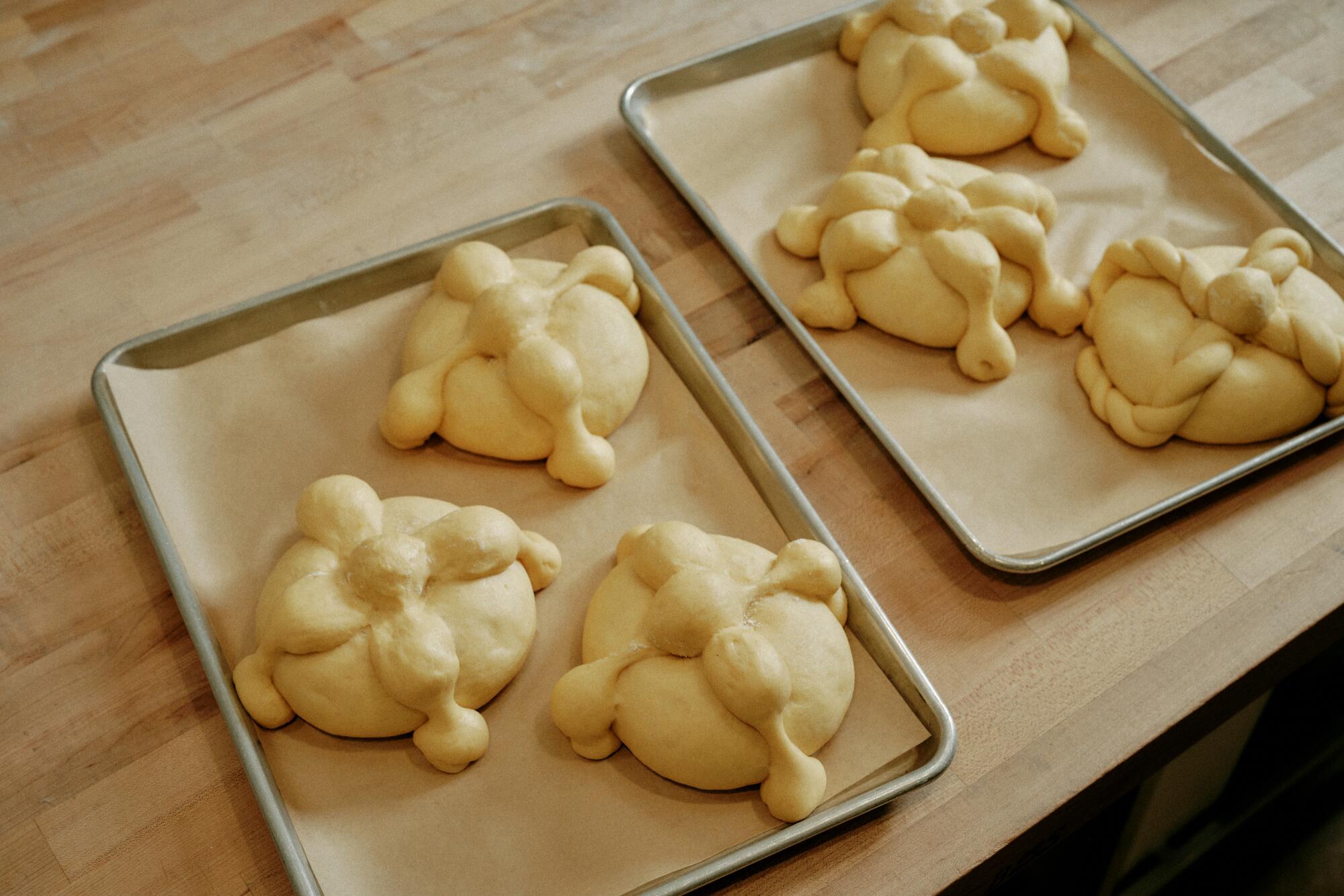
He crisscrosses the “bones” across the tops of the dough. You also can create braids, crisscrossing them over the bread and topping the center with a small ball of dough that represents a skull.
Once he has decorated the bread, Enciso usually bakes them as is, but he tests one — brushing egg wash over its surface and sprinkling it with sesame seeds.
When Enciso pulls them out of the oven, they look gloriously puffy and are well browned. Not a golden brown but deeply burnished. “A successful bake,” he says.
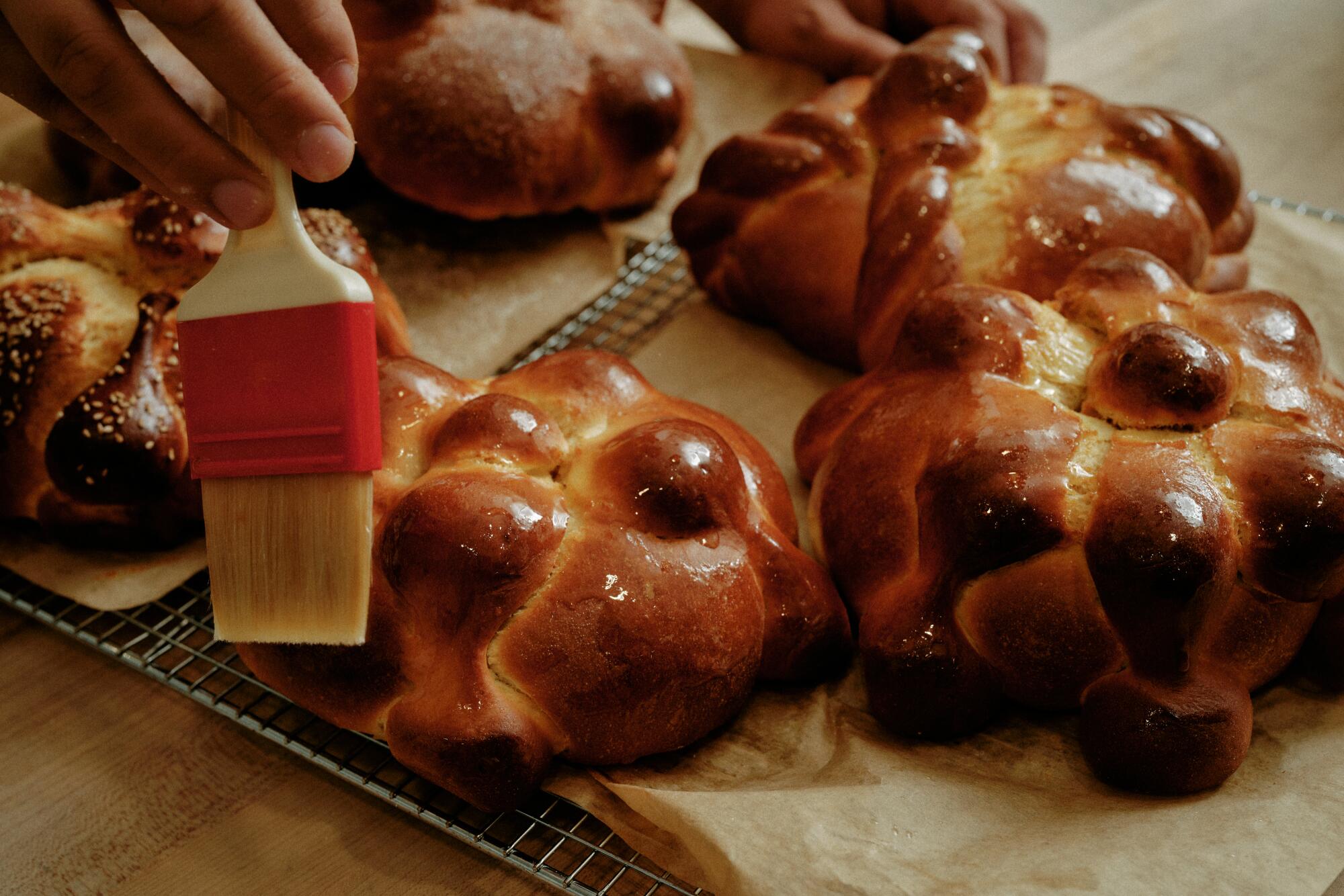
Gusto Bread is at 2710 E. 4th St., Long Beach, (562) 343-1881, gustobread.com
More to Read
Eat your way across L.A.
Get our weekly Tasting Notes newsletter for reviews, news and more.
You may occasionally receive promotional content from the Los Angeles Times.

